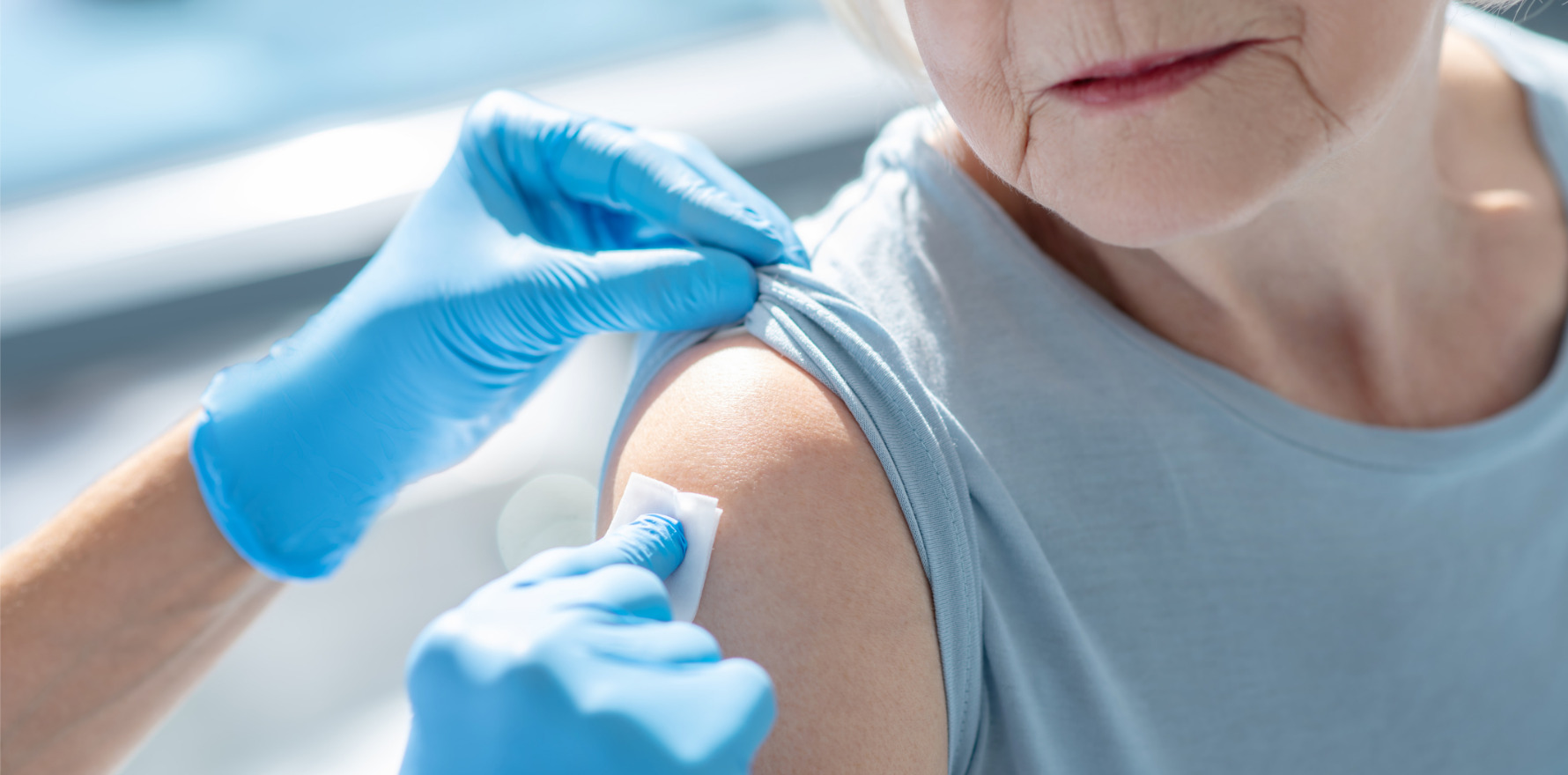You probably know someone who has flu or covid. You probably also know an older person who is missing out on vaccines that can protect them from getting seriously sick.
Last month, almost two in three people older than 75 weren’t up-to-date with their covid jabs. And the flu vaccination rate for people older than 65 was down from previous years.
Some groups are falling further and further behind. Only 11% of older Australians who struggle with English were up-to-date with their covid vaccinations. Older people who are poorer or live in rural areas are more likely to miss out, too.
Last month, the federal government revealed the vaccination rates in different aged care facilities. It makes for grim reading.
While Tasmania leads the nation in aged care vaccination, it’s nothing to celebrate. Less than half of Tasmanian aged care residents are up-to-date with their covid vaccinations. To put that dismal failure in context, the rate in the UK is almost double that, at about nine in 10. Meanwhile, Tasmania is barely beating North Dakota.
With this new data, we can zoom in to see where the biggest problems are. There is one aged care home in Tasmania with only a shocking one in 10 residents vaccinated for covid in the past year. In another, only one in 10 residents have been vaccinated for flu.
When it comes to infectious diseases, aged care residents are among the most vulnerable people in Australia. They live in group settings, so they are more likely to get infected. If they are infected, they are more likely to get seriously ill, be hospitalised, or die.
Releasing data is an important first step towards ending this scandal. A new budget investment that pays pharmacists to vaccinate residents in aged care homes will also help. Next, the federal government should set minimum targets for aged care homes, and primary health networks should be tasked with helping aged care homes to meet them.
Our new Grattan Institute report shows that zooming in on low vaccination rates is crucial elsewhere, too. We found that there are big differences in vaccination rates among the patients of different GPs.
For some GPs, only about 40% of their older patients are vaccinated for flu. For others, the rate is about 90%.
For covid, the bottom 5% of GPs – about 1600 GPs – have only 16% of their older patients up-to-date with vaccinations. The rate for the top 5% is nearly five times higher, at 78%.
GPs are the cornerstone of our health system and they are responsible for promoting preventive care, including vaccination. But they aren’t necessarily to blame for low vaccination rates. GPs with low vaccination rates have more patients who are poorer, sicker, and who struggle with English, all of which are barriers to vaccination.
But our analysis also shows that even GPs with similar patients, and GPs in the same neighbourhood, often have very different vaccination rates. Just within northeast Hobart, GP vaccination rates for flu range from less than seven in 10 older patients up to more than nine in 10. And the gaps for covid, shingles, and pneumococcal are all much bigger.
These patterns point to three things governments must do.
One is to level the playing field by making GP funding fairer. Federal health minister Mark Butler should take his initial funding reforms further, to ensure clinics with sicker and poorer patients get more money. That will help them spend time with patients who may need more explanation, reassurance, and support to get vaccinated.
And primary health networks should regularly give data to all GP clinics, showing them how their vaccination rates compare to similar clinics.
Then, PHNs should find out what’s going right in clinics that are doing well, so they can spread best practices. The networks should also find out what’s going wrong in clinics that are doing poorly, and offer them help to do better.
That might mean extra resources to combat misinformation, more staff to vaccinate patients, translation support, or helping connect patients to their pharmacy to get vaccinated there.
Australia needs a comprehensive strategy to lift adult vaccination rates, including advertising campaigns, SMS reminders for high-risk people, and tailored local programs that work with communities with the lowest rates of vaccination.
But governments must also address the big imbalances in our health system, because resources don’t go where they are most needed, and too often problem areas are left to fester.
Better data are more available than ever. Governments must use the data to focus funding and support, so that every vulnerable Australian can get potentially life-saving preventive healthcare, including vaccines.
Peter Breadon is the Health Program Director at Grattan Institute. He has worked in a wide range of senior policy and operational roles in government, most recently as Deputy Secretary of Reform and Planning at the Victorian Department of Health.
This article was first published by the Grattan Institute. Read the original here.



